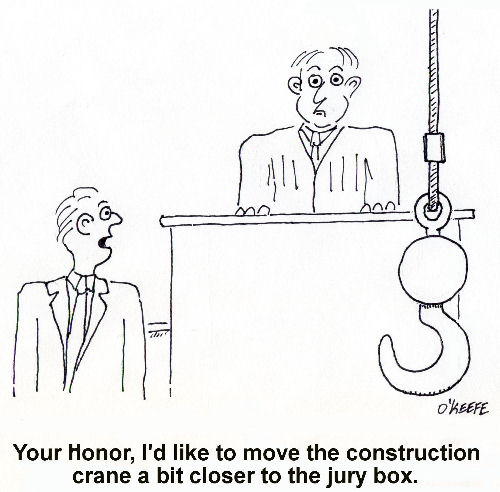|
Have you thought about using courtroom visual aids before but didn’t have a clue of where to begin? Many feel that when they were born somehow the creativity bone was left out. As a result, they feel very unsure of themselves and are particularly doubtful about their ability to suggest to an artist what they might need. The difficulty that presents itself is not that they are unaware of what the real cause of the problem is, but rather unsure of how best to portray it to others, say a jury. Those involved in the legal profession know that courtroom visual aids, a.k.a. courtroom demonstratives, can be effectively used to convey ideas that are easily lost in purely verbal descriptions. But should these be in the form of scale models? Annotated photos? Graphic art renditions? Computer Aided Design (CAD) drawings? No need to worry, this is the territory of the visual artist, well trained in perspective. I recently received a call from an attorney client who was representing a worker who was severely injured in an industrial accident. The situation involved the operation of material handling equipment which was much too large to bring into the courtroom. And it was also far too complex to sufficiently depict its operation through the use of photographs or videotaping. After gathering details about the accident, I determined that showing the jury a 1/20 scale model of the equipment as a whole would be the ideal way for the attorney to begin telling the story. This model would be used in conjunction with a much larger and fully operational 1/4 scale model of the key portion of the equipment that is held to have failed. This larger model would serve as a spotlight on the area in question, enabling the jury to zero in on specific details. And because it was fully operational, the attorney could demonstrate the precise sequence of events that led up to the injury. The jury might even be allowed to manipulate the mechanism themselves to gain an even better understanding. In addition to these physical models, a graphic illustration would be used to illustrate the hazardous condition that existed immediately before the accident and how this led to the worker’s injuries. This final piece in the visual aid puzzle would serve to tie all the elements together. No matter what the situation, a visual courtroom demonstrative can be devised to bring the situation at hand into graphic light, where its message can be easily absorbed by all. _________________________________________________________________ |
Engineering Expert Witness Blog
Published by Philip J. O'Keefe, PE, MLE




